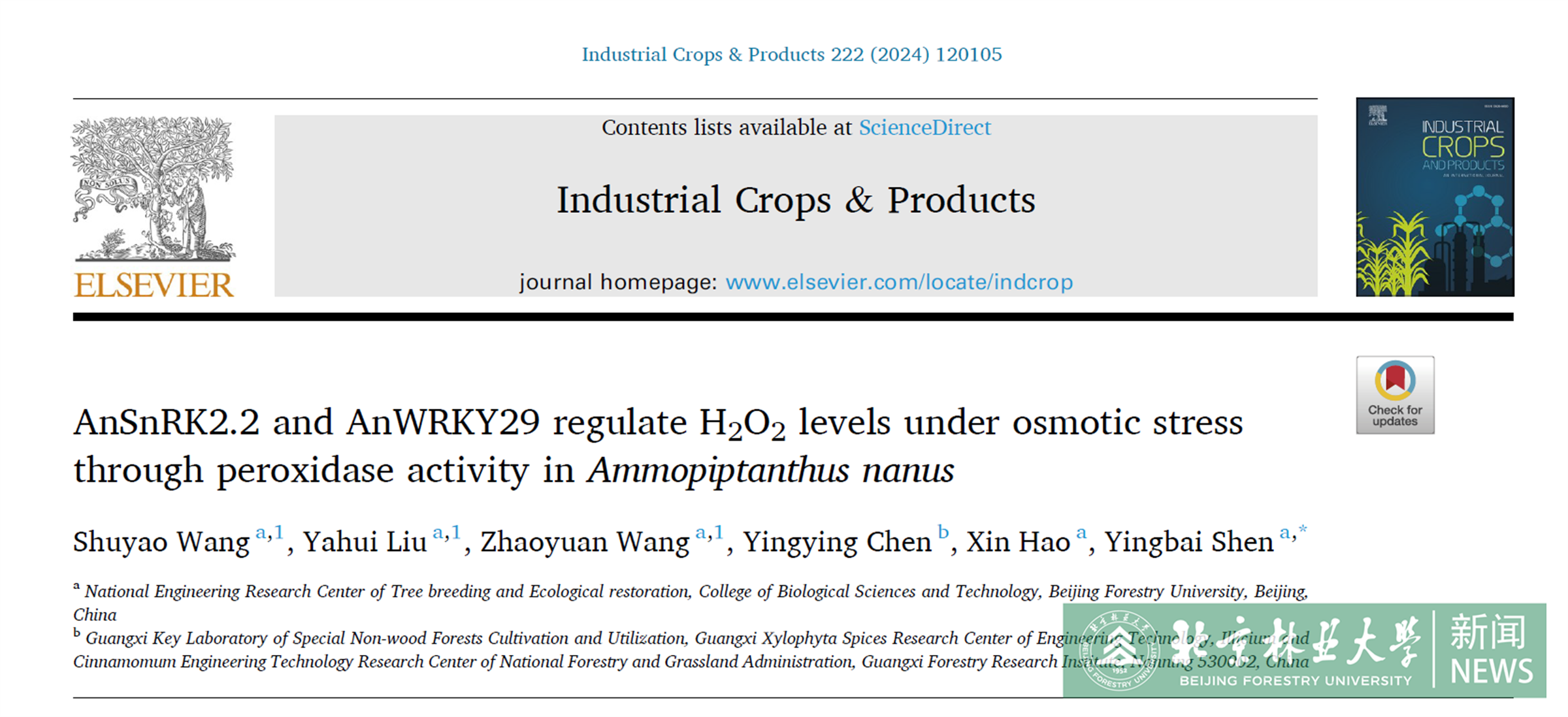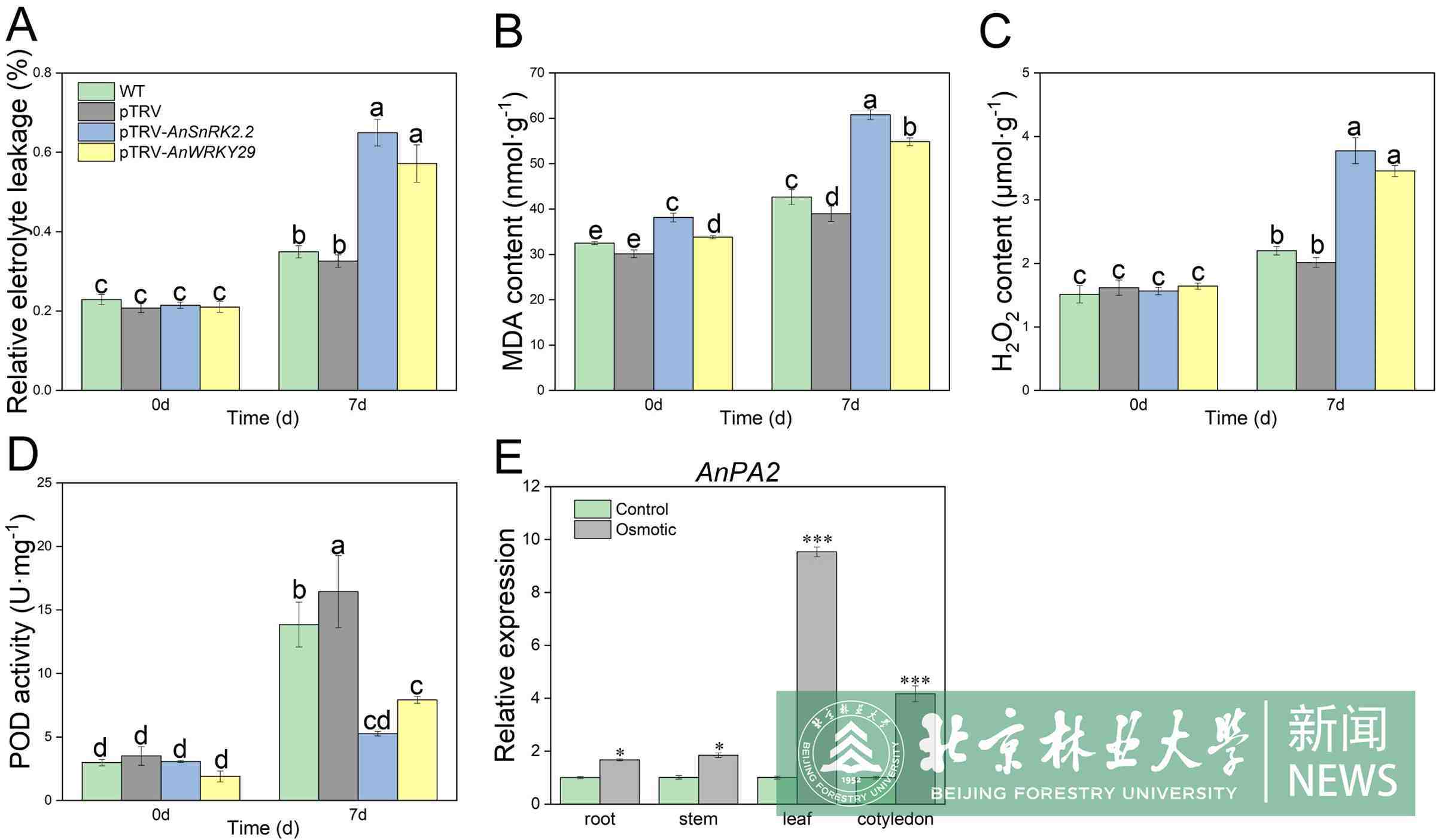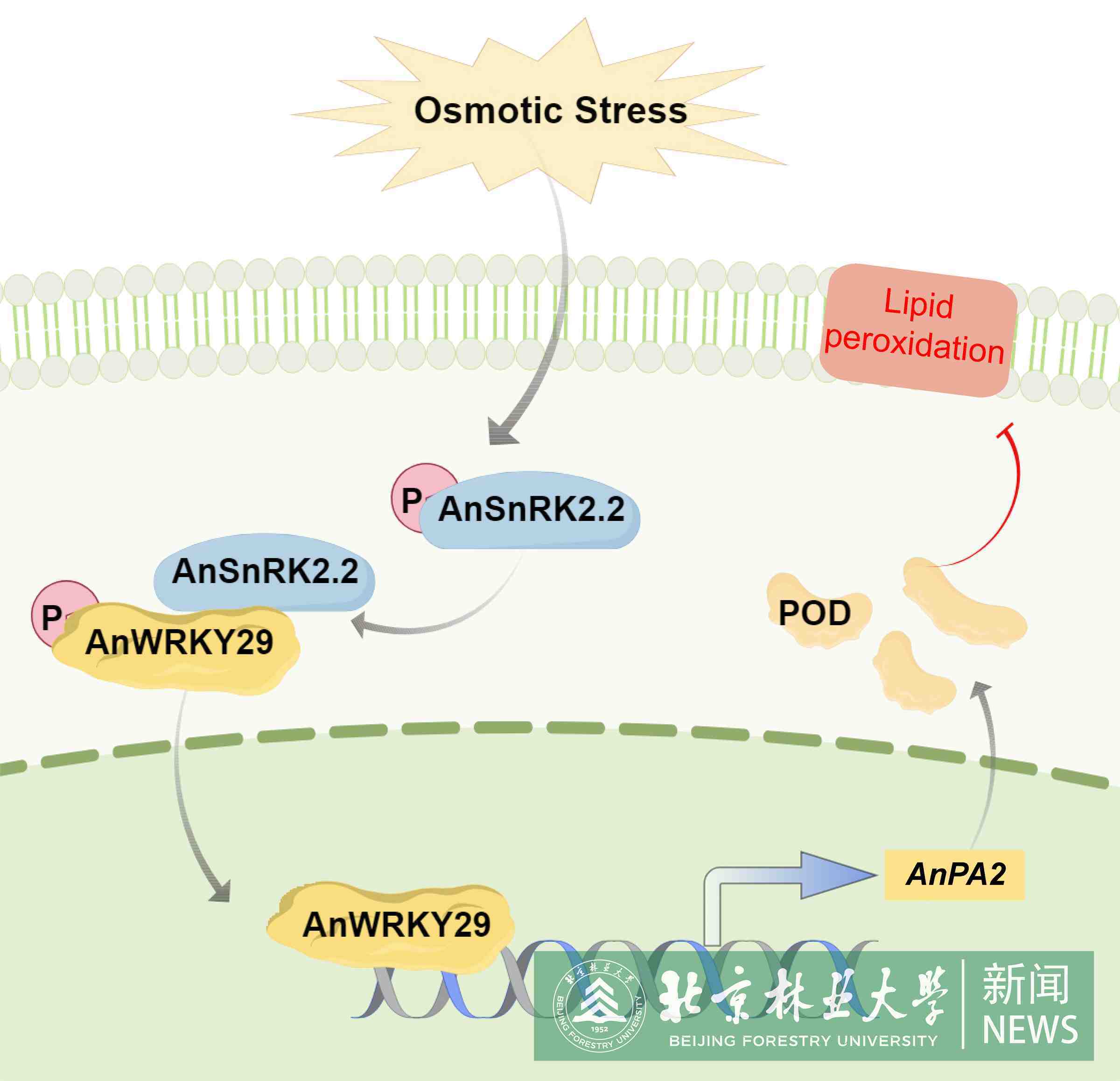Latest news
Professor Shen Yingbai's team from the School of Biological Sciences and Biotechnology recently published a study in the top journal Industrial Crops and Products (IF=5.6) titled "AnSnRK2.2 and AnWRKY29 regulate H2O2 levels under osmotic stress through peroxidase activity in Ammopiptanthus nanus". The research uncovers how Ammopiptanthus nanus boosts its resilience to osmotic stress by enhancing its hydrogen peroxide (H2O2) scavenging capabilities. These findings hold significant implications for the conservation and restoration of this endangered species and deepen the understanding of plant survival mechanisms under environmental stress.

The Ammopiptanthus nanus (Popov) Cheng F, commonly known as the desert shrub, is a drought-tolerant deciduous shrub or small tree typically found in arid deserts and semi-arid regions. Endemic to China, it primarily inhabits the arid zones of northwest China, notably Xinjiang Uygur Autonomous Region. Desertification is a major factor affecting its survival, posing threats of drought and salinity to A. nanus. Severe osmotic stress (annual precipitation < 200 mm) significantly constrains the conservation and reproductive of this endangered species, exerting a profound adverse impact on the ecological restoration of desert ecosystems .With the completion of genome sequencing of A.nanus, the AnSnRK2 gene family was identified in response to hyperosmotic stress. SnRK2 is a central regulator of plant responses to environmental signals and also plays a key role in plant development and growth under favorable conditions. Numerous studies have shown that the SnRK2 gene family is related to hyperosmotic stress. Lozano-Juste et al. found that RAF-like MAPKKKs are activated by hyperosmotic stress, which activates downstream ABA-unresponsive and ABA-activated SnRK2s, integrating initial osmolarity and ABA signaling cascades. Previous researchers established that the function of MdSnRK2-I is important in fruit ripening and osmoregulation, identifying the MdSnRK2-I-mediated signaling pathway that controls ETH biosynthesis. Studies have shown that SnRK2s, particularly SnRK2.10, play a crucial role in modulating WRKY transcription factors under stress conditions such as salinity and oxidative stress. For example, SnRK2.10 can phosphorylate and activate WRKY33, WRKY40, WRKY46, and WRKY75, which in turn regulate plant stress responses by influencing reactive oxygen species (ROS) pathways. The research team's prior investigations have indicated that transgenic AnWRKY29 enhances plant resistance to osmotic stress by maintaining ion balance, accumulating osmotic substances, and effectively clearing H2O2. Nevertheless, the mechanism underlying the clearance of H2O2 has not been fully elucidated.

This investigation uncovered that SNF1-RELATED PROTEIN KINASE 2.2 (AnSnRK2.2) is responsive to osmotic stress and interacts with AnWRKY29, modulating its functionality. Comparative analysis with control specimens reveals that plants subject to gene silencing or heterologous expression of AnSnRK2.2 exhibit diminished or enhanced osmotic stress tolerance, respectively. Moreover, the antioxidant capacity of these plants is also influenced, predominantly through the regulation of peroxidase activity. The observations indicate a direct binding affinity of AnWRKY29 to the W-box motifs within the promoter region of peroxidases 2 (AnPA2). Collectively, this findings delineate the mechanism by which the AnSnRK2.2-AnWRKY29 complex orchestrates the transcriptional reprogramming of A. nanus AnPA2, thereby fortifying osmotic resistance. These insights offer a fresh perspective on the regulatory pathways through which AnSnRK2.2-AnWRKY29 modulates the osmotic stress response.


Dr. Wang Shuyao, Dr. Liu Yahui, and Dr. Wang Zhaoyuan from Beijing Forestry University are the co-first authors of the paper, with Professor Shen Yingbai serving as the corresponding author. Researcher Chen Yingying from the Guangxi Academy of Forestry and Dr. Hao Xin, a postdoctoral researcher at China Agricultural University, also made significant contributions to the study.
This work was supported by the National Natural Science Foundation of China (31270655).
Written by Wang Shuyao, Zhang Yakun
Translated and edited by Song He
Reviewed by Yu Yangyang










